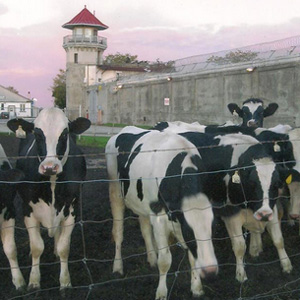Project SOIL Case Studies: Growing Public Food
Posted: January 5, 2015
Categories: GoodFoodBites / Municipal Regional Food Policy Network / News from Sustain Members
Project SOIL (Shared Opportunities on Institutional Lands) has released 4 in-depth case studies on Ontario and Quebec institutions that are producing food on-site. These case studies will inform Project SOIL’s 5 pilot initiatives and serve as detailed resources for other institutions interested in starting similar initiatives.
Project SOIL is a feasibility study exploring the potential of on-site food production for public institutions through arrangements with local producers. The project is testing the potential to grow mutually beneficial relationships between local producers and participating health care, social service and educational institutions, and to increase the production and consumption of fresh food.
From Project SOIL:
With funding from the New Directions program of the Ontario Ministry of Agriculture, Food and Rural Affairs, we have started five pilot initiatives, producing food on-site at health care, social service and educational institutions. There is significant interest in the project, and many institutions across the province are contemplating or starting their own food production pilots. However, the pathway from pilot to viable core program can seem lengthy and fraught with challenges
To support these initiatives, and provide useful examples from which to learn, today we are releasing four in-depth case studies of existing models that have achieved significant annual production:
- FoodShare’s School Grown Market Gardens, with 2014 sales of over $17,000 from two high school sites;
- The Community Harvest food growing project at the Black Family Farm, where the Ottawa Food Bank’s staff farmer produced over 70,000 lbs. of vegetables in 2014;
- McGill Feeding McGill, where the food service department spends $45,000 per year on produce grown on a University owned-and-operated 25 acre farm, and;
- the Kingston Prison Farms, which included the largest urban farm in Canada (900 acres), and which housed beef, dairy, egg, fruit and vegetable production operations and an abattoir serving the local region.
These case studies represent food production models that developed over years, and required time, resources and commitment to achieve significant scale. In each case study, we document the history, resources, partnerships and lessons that enabled each to grow and prosper in their own way.
For more information, or to download low resolution versions of these four case studies, please visit our website, or contact Phil Mount (pmount@wlu.ca) or Irena Knezevic (Irena.Knezevic@carleton.ca).
One response to “Project SOIL Case Studies: Growing Public Food”
Leave a Reply
You must be logged in to post a comment.


[…] eastern Ontario, Project SOIL identified ways to use food gardens on hospital and long-term care facility land for therapy, […]